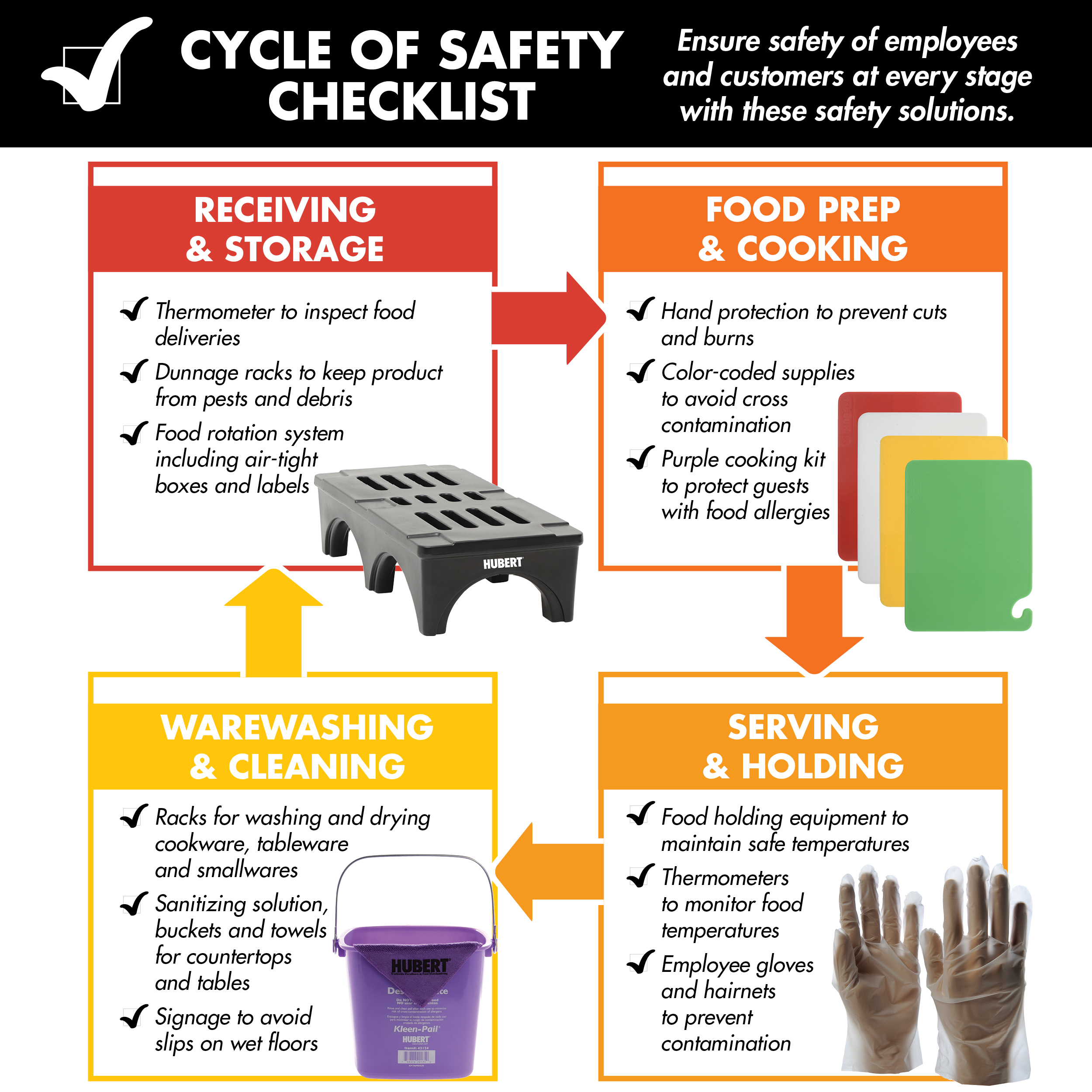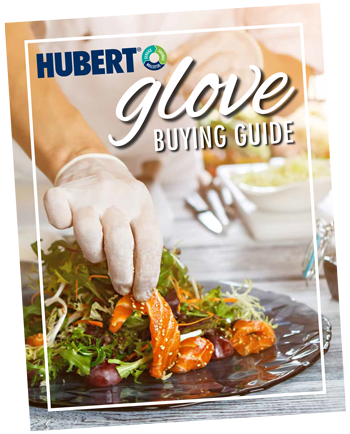2 Protect Hands With the Right Glove
OSHA estimates that hand injuries cost the food service industry about $300 million per year in workers’ compensation costs and lost work time. Hubert can help safeguard your staff from unnecessary injury.
Whether they are slicing veggies, pulling out a hot pan or handling raw meat, using the correct glove is essential to keeping your kitchen environment safe.
Five Must-Have Food Service Gloves:
- Disposable Gloves: Prevent cross-contamination and support compliance with health code standards
- Heat-Resistant Gloves/Mitts: Protect your arms from hot spatters, steam and oil with a variety of styles and materials
- Cut-Resistant Gloves: Cut back on workplace injuries by choosing task-specific gloves that provide the right level of protection without compromising too much dexterity and comfort
- Cleaning Gloves: Protect workers from hot water, chemicals and other elements during warewashing or cleaning procedures
- Work Gloves: Prevent minor cuts, abrasions and exposure from unpacking boxes, or stocking shelves and freezers
3 Prevent Cross-Contamination
If space allows, create dedicated prep zones in your commercial kitchen to help avoid cross-contamination. For example, one area to prep meat, another for produce, another for seafood, etc.
Using color-coded tools, such as knives and cutting boards, is an effective way to create contamination-free prep stations. Colors are often used to identify certain food groups, which minimizes the risk of cross-contamination. Below are the suggested food types to be used with each color.
- Yellow: Poultry
- Red: Cooked Meats
- Green: Fruits and Vegetables
- White: Bakery/Dairy
- Purple: Allergen Awareness
Make sure everyone working in the kitchen knows the color-coded system by hanging a reference guide where employees can refer to it easily.
Shop Cutting Boards and Knives.
4 Sanitize Regularly
What customers see and regulators say matters. An effective sanitation program is necessary to the overall success of any food handling operation.
Arm Your Team for Success:
- Make sure cleaning and sanitizing supplies are available to the people doing the job
- Know how equipment and other items should be cleaned and sterilized
- Understand how your chemicals work and what compromises their effectiveness
- Establish standards for cleaning and sanitizing
- Use the right personal protective equipment (gloves, goggles, aprons, etc.)
- Have a plan in place to take corrective action when necessary
Hubert has all the cleaning supplies & tools you need to stay clean and compliant.




